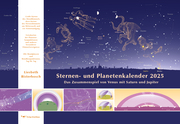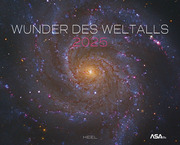QSO Hosts and Their Environments (gebundenes Buch)
QSO Hosts and Their Environments
Erschienen am
31.01.2002
Bibliographische Informationen
ISBN/EAN: 9780306466625
Sprache: Englisch
Seiten: xix, 376 S., 115 s/w Illustr.
Auflage: 1. Auflage 2002
Bindung: gebundenes Buch
Beschreibung
InhaltsangabePreface. Part I: Radio quiet/loud dichotomy. Unification. The hosts galaxies of radio-loud and radio-quiet quasars; J. Dunlop. The Nucleus-Host Galaxy Connection in Radio-Loud AGN; M. O'Dowd, et al. The host galaxies of luminous radio-quiet quasars; W.J. Percival, et al. The radio loudness dichotomy: environment or black-hole mass?; R. McLure, J. Dunlop. QSO environments at intermediate redshifts; M. Wold, et al. Host galaxies and cluster environment of BL Lac objects at z > 0.5; J. Heidt, et al. Associated absorption and radio source growth; J.C. Baker. Host galaxies of RGB BL Lacertae objects; K. Nilsson, et al. On the Parent Population of Radio Galaxies and the FR I-II Dichotomy; R. Scarpa, C.M. Urry. The real difference between radio-loud and radio-quiet AGNs; A. Sillanpää. Broadband optical colours of intermediate redshift QSO host galaxies; E. Örndahl, J. Rönnback. Three peculiar objects from a new sample of radio galaxies; L. Lara, et al. Part II: QSO redshift evolution and their cluster environments. QSO hosts and companions at higher redshift; J.B. Hutchings. The luminosity function of QSO host galaxies; L. Wisotzki, et al. QSO host galaxy star formation history from multicolour data; K. Jahnke, et al. Near-infrared imaging of steep spectrum radio quasars; J.K. Kotilainen, R. Falomo. Adaptive-optics imaging of low and intermediate redshift quasars; I. Márquez, et al. Subaru Observations of the Host Galaxies and the Environments of the Radio Galaxy 3C324 at z = 1.1; T. Yamada. Extremely red radio galaxies; C.J. Willott, et al. The environments of radio-loud quasars; J.M. Barr, et al. Extended X-ray emission around radio-loud quasars; M.Hardcastle. WFPC2 Imaging of Quasar Environments; R.A. Finn, et al. Deceleration and asymmetry in QSO radio map; S. Ryś. Spatially resolved spectroscopy of emission-line gas in QSO Host galaxies; A.I. Sheinis. Host Galaxies and the Spectral Variability of Quasars; F. Vagnetti, D. Trèvese. Part III: Tidal Interactions/Mergers. ULIRGS. The AGN-Starburst Connection in Ultraluminous Infrared Galaxies; M. Rowan-Robinson. The QSO &endash; Ultraluminous Infrared Galaxies Connection; S. Veilleux, et al. Recent star formation in very luminous infrared galaxies; A. Bressan, et al. A Molecular Gas Survey of z < 0.2 Infrared Excess, Optical QSOs; A.S. Evans, et al. Molecular gas in nearby powerful radio galaxies; S. Leon, et al. HI Imaging of low-z QSO Galaxies; J. Lim, et al. Dust in Quasars and Radiogalaxies as seen by ISO; S.A.H. Müller, et al. Imaging of a Complete Sample of IR-Excess PG QSOs; J.A. Surace, D.B. Sanders. Interaction patterns in a complete sample of compact groups; V. Zitelli, et al. Part IV: Galaxies hosting lower level AGN activity. AGN Host galaxies: H ST at z ~ 0.1 and Gemini at z ~ 2; D. Schade, et al. Host galaxies and nuclear structure of AGN with H2O megamasers as seen with H ST; H. Falcke, et al. Statistics of Seyfert galaxies in clusters; B. Kelm, P. Focardi. More Bars in Seyfert than in non-Seyfert galaxies; J.H. Knapen, et al. Stellar Populations in the Host galaxy of AGNs; M. Joly, et al. The Stellar Population of powerful Seyfert 2 galaxies: Implications for QSOs; R.M.G. Delgado. Anisotropy in the mid-IR emission of Seyfert galaxies; A.M.P. Garcia, J.M.R. Espinosa. FIR and
Weitere Artikel aus der Kategorie "Physik, Astronomie/Astronomie"
Neuerscheinung

Neuerscheinung





